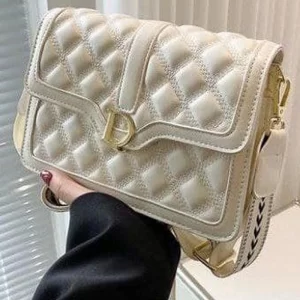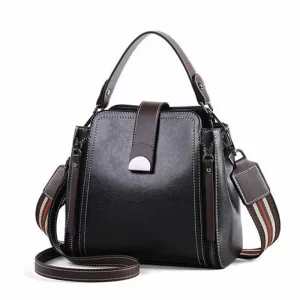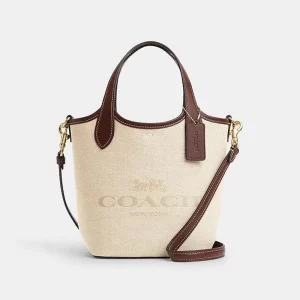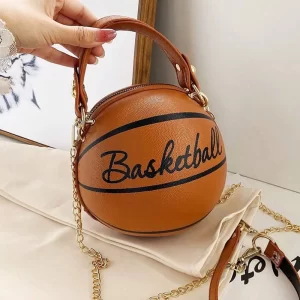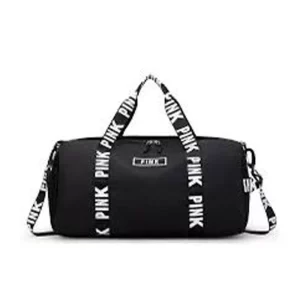Buying a handbag isn’t just a fashion decision—it’s an investment in style, functionality, and durability. Whether you’re shopping for a trendy tote or a timeless satchel, it’s easy to fall into the trap of choosing a bag based on looks alone. But without knowing what to look for, you might end up wasting your hard-earned money on something that won’t last.
In this article, you’ll discover exactly how to spot a quality handbag—one that looks great, performs well, and stands the test of time. Let’s break down the key elements that separate a high-quality bag from a disposable one.
1. Why It’s Important to Recognize a Quality Handbag
A handbag is more than just an accessory. It’s something many people use every single day, often carrying valuables like wallets, phones, and personal items. That means durability, security, and comfort are essential. Choosing a low-quality bag may lead to early wear and tear, broken zippers, frayed stitching, or even embarrassment in public when the strap snaps unexpectedly.
A quality handbag, on the other hand, can elevate your outfit, serve you for years, and even increase in value—especially if it’s from a premium brand.
2. Examine the Stitching: Neat, Tight, and Even
One of the most obvious signs of quality lies in the stitching. High-end bags feature even, tight, and straight stitches. Loose threads, uneven lines, or gaps are red flags.
Run your fingers over the seams. Do they feel strong? Are the stitches clean with no fraying? If the manufacturer cuts corners on stitching, you can bet they’ve done the same elsewhere.
Pro tip: Double stitching at stress points like handles and straps is a great sign of durability.
3. Check the Material: Not All Leathers Are Equal
Materials are everything. A luxury handbag typically uses full-grain or top-grain leather. These types of leather not only feel better but also age beautifully with a rich patina over time.
If you’re not sure whether a bag is genuine leather, try the sniff test—real leather has a distinct, rich scent, while faux leather often smells like plastic or chemicals. Also, genuine leather has a natural texture and isn’t perfectly smooth or shiny.
For non-leather options, high-quality canvas, nylon, and vegan leathers can also be great—but they should still feel strong, substantial, and well-made.
4. Feel the Weight and Structure of the Bag
A handbag that feels too light for its size may be made from cheap, thin materials. Quality handbags tend to have a bit of heft and firmness due to the robust materials and internal reinforcement used.
The bag should also maintain its shape when empty. Floppy bags that collapse easily often lack inner structure, which may lead to sagging and deformation over time.
5. Hardware Tells a Story: Zippers, Clasps, and Handles
Don’t overlook the hardware. Zippers, clasps, and metal rings should feel solid and operate smoothly. Flimsy or sticky zippers are signs of a cheap handbag.
Look for:
- YKK zippers – a trusted standard in high-end fashion.
- Protective plastic wrapping on new hardware (a sign the brand cares).
- Engraved or branded hardware rather than plain, generic parts.
Also, handle attachments should be tightly secured with rivets or reinforced stitching—not just glued.
6. Interior Matters: Lining, Pockets, and Layout
A well-made handbag doesn’t cut corners on the inside. The lining should be stitched in, not glued. Thin, loose, or noisy polyester linings are often used in poor-quality bags.
Quality handbags feature:
- Soft, durable lining (like cotton or microfiber).
- Multiple compartments or pockets for organized storage.
- Secure closures for each section—zippers, flaps, or magnetic snaps.
The interior should feel as thoughtfully designed as the exterior.
7. Brand Reputation and Reviews Matter
Sometimes, the brand name carries weight for a reason. Trusted brands have a reputation to uphold, so they’re more likely to use superior materials, skilled labor, and offer better after-sale support.
But don’t just buy based on name alone. Check customer reviews, look for video unboxings, and read up on the brand’s history. A lesser-known boutique brand can still offer exceptional quality—you just need to dig a little deeper.
8. Price Can Reflect Quality—but Not Always
You’ve heard the saying: you get what you pay for. While not always true, very cheap handbags often use the lowest quality materials and labor.
However, price alone isn’t proof of quality. Some mid-range bags offer incredible craftsmanship and durability without designer markups. Look for value—not just a label or a high price tag.
Focus on quality indicators, not just branding hype.
9. Craftsmanship and Country of Origin
Countries like Italy, France, Spain, and Japan are known for their superior handbag craftsmanship. Brands that manufacture in these countries usually emphasize traditional techniques, hand-finishing, and strict quality control.
That said, some brands produce amazing quality in other locations too. What matters most is the transparency and standards of the production process.
Look for brands that are open about where and how their bags are made.
10. Warranty and Return Policy: Trust the Brand’s Confidence
When a brand offers a warranty or generous return policy, it shows confidence in the product’s quality. A 12-month warranty, for example, signals that the company expects the bag to hold up.
If a bag has no warranty, no return policy, or vague customer support, that’s a red flag. Stick with trusted online stores for bags handbags that prioritize your satisfaction and stand behind their products.
11. Sustainable and Ethical Practices: The New Mark of Quality
Today’s shoppers care about how their bags are made. Many quality-focused brands are now investing in ethical labor, eco-friendly materials, and sustainable production.
If you see certifications like LWG (Leather Working Group) or Fair Trade, it’s a good sign that the bag was made with more than just profit in mind. These bags often last longer too, thanks to better materials and careful workmanship.
12. Test It in Person (If Possible)
While online shopping is convenient, nothing beats seeing and feeling the bag in person. Check:
- How the bag feels on your shoulder or arm.
- Whether the zippers work smoothly.
- If the weight feels balanced when loaded.
If buying online, choose a trusted eCommerce platform with clear return policies and risk-free shopping.
13. Ask These Questions Before Buying
Before clicking Buy Now, ask yourself:
- Does this bag feel sturdy and well-constructed?
- Are the materials durable and high quality?
- Do I trust the brand or retailer?
- Will this bag suit my needs (size, pockets, strap length)?
- What are real users saying about it?
Answering these honestly can save you from making an expensive mistake.
Invest Wisely, Carry Proudly
Spotting a quality handbag doesn’t require a fashion degree—it just takes a keen eye and a bit of guidance. By focusing on stitching, material, hardware, structure, and brand transparency, you’ll be better equipped to make a smart investment.
In a world full of fast fashion and fleeting trends, a well-made handbag stands out. It’s reliable, beautiful, and worth every penny. So next time you shop, take your time and use this guide to find a handbag that’s truly worth it.
Would you like a printable checklist version of this guide to take with you while shopping?



